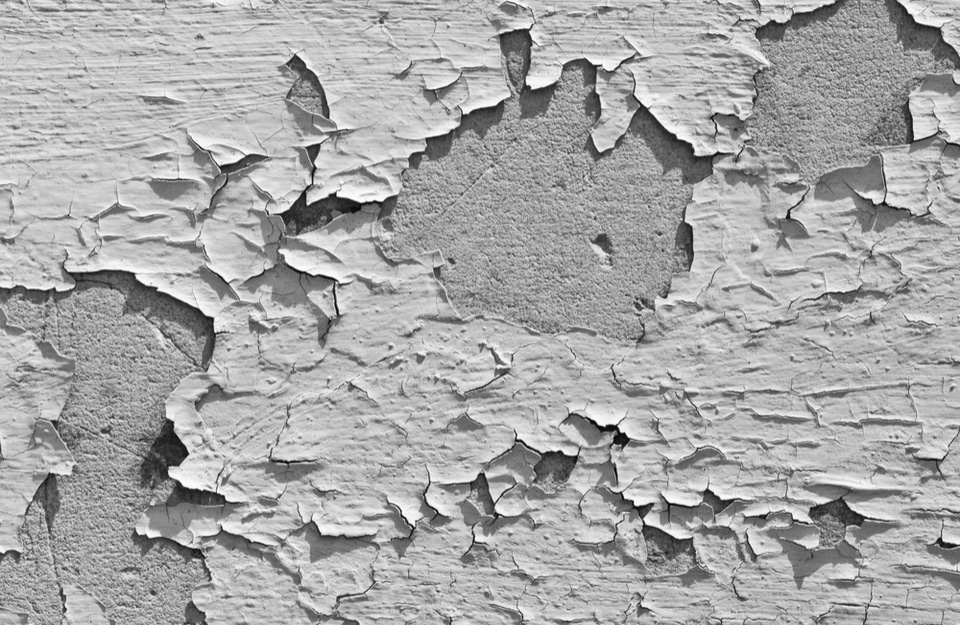As with asbestos, discovering that a home you are interested in buying or selling in France contains lead-based paint can come as a bit of a shock.
Lead-based paint was commonly used in France for many years until a ban was imposed by the government in 1949, so many properties still contain lead paintwork both inside and out.
But much like asbestos, there is usually very little cause for concern as long as you follow the government’s official guidelines when handling/treating lead in and around your home.
To find out more, check out our guide to dealing with lead in your French property below.
Reccomended for you: How to Deal with Asbestos in French Property
Why was lead-based paint used in homes?
Used for many years throughout France, lead-based paint was popular with building companies for its durability, shine, quick drying properties and ability to resist corrosion.
Why is it dangerous?
Unfortunately, despite its many advantages, lead also has one major disadvantage as it is extremely toxic and can even be deadly if inhaled/ingested in large quantities. Lead is particularly dangerous for young children because it has a very sweet taste and they may be tempted to suck/eat paint chips.
How do I know if my property contains lead?
If you are thinking about buying or selling a French property built before the 1st January 1949, you will need a full lead report. It is the current owner’s responsibility to have a ‘Constat de risque d’exposition au plomb’ or ‘CREP’ survey carried out by professionals and then provide you with a full report before selling the property .
And if you are selling a property, you will need to ensure this survey is carried out no earlier than one year from the completion of sale.
What does the report cover exactly?
The survey and report will cover all painted surfaces, and paintwork found on the property both inside and out and is valid for 12 months. However, it does not cover lead piping, and the seller is not obliged to have the pipes on the property tested for lead when putting a home up for sale.
Who carries out the inspection and produces the report?
The survey must be carried out by a qualified surveyor or technician using a portable lead detector on all painted/varnished surfaces. You can find a list of certified technicians here (in French), and you can also check the qualifications of any company to make sure they are fully certified by the French government.
What happens if no certificate is provided?
As the owner of a property for sale which was built before the 1st January 1949, if you fail to provide a certificate detailing the risk of asbestos, the buyer will be within their rights to cancel the sale. Additionally, if lead is discovered in the property by the future owner, you will be responsible for paying the removal costs and may also receive a fine for ‘non-disclosure’ of toxic materials if the buyer decides to take you to court.
As the buyer of a property, you also have the right to commission an additional independent survey by a qualified surveyor if you are worried about finding lead anywhere in your new home.
What happens if lead is found on the property?
As with the presence of asbestos, the discovery of lead-based paint in or on the house isn’t too much of a problem as long as it’s in good condition.
Lead paint is particularly dangerous when it starts to flake, crack or peel and produce dust. The technician will be on the lookout for deteriorating paintwork during the survey. As the buyer or seller of a French property, following the lead survey you will have several options:
- If no lead or only very low levels of lead are found on the property, you don’t need to take any further action.
- If lead-based paint is present on the property but is currently covered up, you will be made aware of its location in case you decide to strip/repaint the area.
- If high levels of lead are found on the property (anything above 1mg/cm3 is considered a risk) you will need to deal with it in one of the following ways:
- Having the paintwork professionally stripped by a qualified company.
- Having the paintwork sealed with an acrylic coating which creates a barrier over the lead-based paint.
Are there any other precautions to take?
Because of the risk of contamination, if you find lead-based paint in a property you are either buying or selling, you will need to warn any companies working in the house about it and ensure they have adequate protection including overalls and face masks.
If you have young children, you will also need to make sure that any lead dust from the paint or plasterwork is regularly removed from the house to avoid any risk of them inhaling or swallowing it.
Additionally, if you notice that any contaminated areas of paintwork or plasterwork look damp, you should have them covered up to avoid anybody coming into contact with paint flakes or dust.




